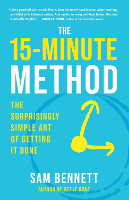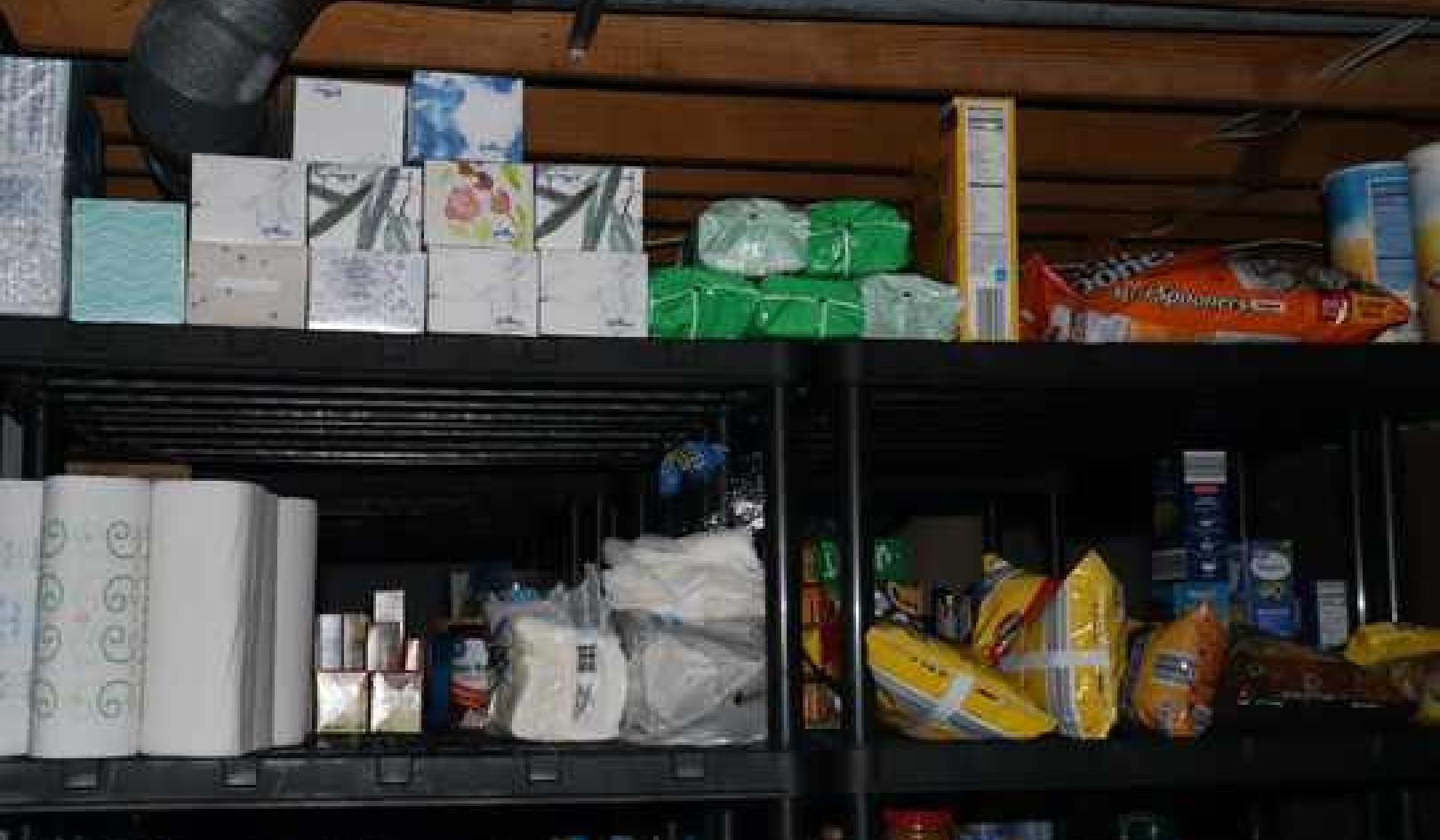
Image by Steve Buissinne
Article Summary: This article explores the transformative power of the 15-Minute Method, a simple yet effective approach to achieving significant life changes by dedicating just 15 minutes a day to meaningful activities. By focusing on a single task for a short period, you can make remarkable progress and overcome the feeling of being overwhelmed. The article provides practical tips, real-life examples, and unconventional strategies to help you harness the potential of daily focused effort to change your life.

Change Your Life with the 15-Minute Method
by Sam Bennett.
Is it possible to change your life in just 15 minutes a day?
You bet your bippy it is.
Here’s how: Spend 15 minutes a day, every single day, on something that matters to you.
You will discover this: it is amazing how much you can accomplish in just 15 minutes of concentrated focus. And it is flat-out jaw-dropping how much you can accomplish when you are devoting those 15 minutes every day for a week, a month, a year, six years, sixty years…
I’ve been advocating the 15-Minute Method for over 20 years now, and every day I hear a new story about how someone completed their screenplay, or found an exciting new job, or cleared out the basement, or established a meditation practice – all done working in less time than it takes to complete a new level of Candy Crush.
When people tell me – as they often do – that they are “overwhelmed,” usually they are telling me that they have too many things on their to-do list, and none of them are sufficiently interesting to warrant doing first. One client referred to this as “being pecked to death by ducks.”
The 15-Minute Method asks you to pick something and focus on it. What will you pick? You may know the answer right away, or maybe you feel that there’s now a whole new flock of ducks coming at you. No worries – spend your first 15 minutes making a list of potential 15-minute activities, and then, the next day, pick one. Try it. If you like it, keep going. If not, keep working your way through the list, noticing what resonates for you and what doesn’t. Even if you spend your 15 minutes sitting quietly, staring at a blank piece of paper, I would consider that time well spent. As those of us who remember the long car trips of our youth spent in the way-back of the family Volvo well know, boredom can be profoundly instructive.
Skip the First Step, and Other Unusual Strategies
If the first benefit of the 15-Minute Method is the necessity to prioritize and focus, the second benefit is that of cumulative effort. If you play guitar for 15 minutes every day, it will not be very long before you are a much better guitar player. If you write for 15 minutes a day, eventually you will have a book. If you clear a few inches of clutter each day, you will soon have a clear, workable space. The results are undeniable and unmistakable.
Finally, the 15-Minute Method gives you permission to fool around, to fail, to noodle, to try a new way, to hopscotch right over your perfectionism, procrastination, and self-doubt and figure out what works for you. It allows you an easy way to prove to yourself that you can keep your promises to yourself, which has a delightfully positive effect on your self-esteem.
Here are some unconventional approaches to getting started on a project or goal. They are especially useful when you’ve been putting something off for a long time, when you have to start over, or when there’s a big emotional component to the work.
Keep a Productivity/Rest Diary
Getting a baseline understanding of how much rest you need (and at what time of day) to achieve maximum sustainable productivity can be illuminating. Much like logging what you eat and drink in a food diary, keeping a productivity/rest diary is designed to focus your attention on how much rest you are actually getting, whether you find it actually restful, and how much you need to function at your best.
You can set this up in any way that makes sense to you: use a tracking app of some kind or just pen and paper. See if you can make some notes throughout the day about how much rest/restorative time you give yourself, as well as when and how you are most productive. You may find that you love to write or create in the mornings and save the afternoons for more administrative tasks. You may find that an afternoon siesta causes you to work more efficiently the rest of the day, or that a daily 15-minute walk eliminates your 3 p.m. slump.
You may also discover that the activities you think of as “taking a break,” like playing a game on your phone, cruising social media, or reading the news, are actually depleting you.
In time, you will begin to trust yourself around your rest/work balance and even find that doing your meaningful work for 15 minutes a day counts as both work and rest.
Skip the First Step
Oftentimes when facing a big new project, we can get ourselves stuck by deciding that the first step has to be something monumental — too big, too extreme, or too tedious.
For example, if you want to write a novel, you decide the first step is to go back to school and get an MFA (too big). If you want to spend more time in nature, you decide the first step is to sell the house and move to a cabin in the woods (too extreme). Or if you want to make a photo scrapbook for Mom’s 80th birthday, you decide the first step is to organize the boxes and boxes of photos by putting them in chronological order (too tedious).
To counteract this, whatever you think the second step might be — consider starting there instead. So maybe it’s “write a summary of the plot” or “go hiking in the woods” or “start picking out ten of your favorite photos.”
This is also a good tactic for those whose inner teenagers immediately resist all goals, suggestions, or plans. Just sneak in the side door and start with a janky, half-baked plan. Could be fun.
Capture Ideas as They Come
Start making notes about your idea or project on index cards or using a note-taking app. I find whole pieces of paper to be intimidating (what if I don’t use up the whole sheet? Isn’t that wasteful?), and I can never find anything I’ve written in a journal.
But the ability to capture little bits of ideas, quotes, points of inquiry, and vague notions and keep them all together in no particular order is...how this book got written. It’s also how I run my business, bought a house, wrote a musical, and stay in touch with a large network of amazing people.
Pretend You Are Already an Expert
Want to start painting? Just start! Assume you already know more than you think you do. Pretend you are a born genius and begin painting with great confidence and joy. You’ll learn as you go. Same with poetry, writing, playing music, creating a TV show, designing a game board, sewing, and anything else you feel is locked behind some impenetrable gate of specialized knowledge.
Honestly, a lot of my successes came about because I didn’t know that what I was trying was supposed to be hard. So I just took a swing, ignored conventional wisdom, broke some of the stupider rules, and obeyed my own instincts and good taste. There have been a few crash-and-burns, but mostly it’s worked out great, and it makes my life way more interesting than if I’d waited to become an expert.
Obviously, it’s easier to try this when the consequences of failure are mild. I wouldn’t swing into real estate investing without doing some research, nor would I start preparing raw pufferfish just for giggles. But for many of the things you want to try, you could probably just dive in and see what happens.
All this “getting ready to get ready” stuff is just cluttering up your path, right?
Give Yourself Frequent Rewards
Write a sentence = get a chocolate chip.
Clear out the sock drawer = watch some kitten videos.
Make a difficult phone call = enjoy a cup of that fancy coffee or tea or whatever.
You wouldn’t expect a child to do something hard without some praise or reward, would you? Or ask an employee to take on a challenging project without some recompense? So start giving yourself special prizes —big and small.
I also make a point of buying myself something special whenever I hit a big milestone. Sometimes it’s something I was probably going to buy anyway, but naming it in my mind as my “Signed My Publishing Contract Gold Charm Necklace” or my “Opening Night of My Musical Designer Tote” is extra fun.
©2024 by Sam Bennett. All Rights Reserved.
Reprinted with permission of New World Library.
Article Recap: The 15-Minute Method is a powerful tool for personal transformation. By committing just 15 minutes a day to something important, you can achieve significant progress and reach your goals. Whether it's developing a new skill, working on a long-term project, or simply decluttering your life, this method proves that small, consistent efforts lead to big changes. Start today and see how dedicating just a few minutes each day can change your life for the better.
Article Source:
BOOK: The 15-Minute Method
The 15-Minute Method: The Surprisingly Simple Art of Getting It Done
by Sam Bennett. Feeling overwhelmed? Procrastinating, then frantically pushing to get everything done? The good news is that healthy productivity is not about doing more. It’s about doing more of what matters. Modern life has us feeling swamped, unsure how to move forward on goals and dreams while still managing the day-to-day. And then there are all those other things still on the list: the garage needs cleaning, those photos need organizing, and the emails, the emails, the emails . . .
Feeling overwhelmed? Procrastinating, then frantically pushing to get everything done? The good news is that healthy productivity is not about doing more. It’s about doing more of what matters. Modern life has us feeling swamped, unsure how to move forward on goals and dreams while still managing the day-to-day. And then there are all those other things still on the list: the garage needs cleaning, those photos need organizing, and the emails, the emails, the emails . . .
Sam Bennett presents a radically simple idea: small actions, the kind you can do in 15 minutes, are enough to move the needle on your levels of joy and satisfaction — and ultimately change your life. Sam guides you from overwhelm to accomplishment.
Click here for more info and/or to order this book. Also available as an Audiobook and a Kindle edition.
About the Author
 Sam Bennett is the author of Get It Done, Start Right Where You Are, and most recently, The 15-Minute Method: The Surprisingly Simple Art of Getting It Done. A writer, speaker, actor, and creativity/productivity specialist, she is a popular course instructor on LinkedIn Learning with over a million class participants worldwide.
Sam Bennett is the author of Get It Done, Start Right Where You Are, and most recently, The 15-Minute Method: The Surprisingly Simple Art of Getting It Done. A writer, speaker, actor, and creativity/productivity specialist, she is a popular course instructor on LinkedIn Learning with over a million class participants worldwide.
Visit her online at http://www.TheRealSamBennett.com.
































